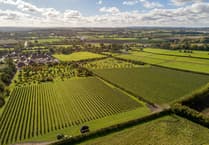Over the summer many of you will have received my Green Spaces campaign survey in which I ask for your help with a number of local environmental initiatives.
You will have read about them in this column before – but today I want to tell you about the response to one of them which has been nothing short of extraordinary, getting on for the biggest I have had to any of my campaigns to date.
It is terrific – but hardly a surprise – to see just how committed we all are in South West Surrey to protecting our natural environment.
The campaign is to extend our Area of Outstanding Natural Beauty (AONB).
This covers a large amount of our area, but there are some important areas of countryside that would benefit from the extra protections that come with being included, such as Tice’s Meadow in Badshot Lea, an area between Milford and Hambledon and some areas to the west of Haslemere.
I helped persuade Natural England to start a boundary review consultation last year and many of you heeded my request to submit responses.
A total of 1,660 people have so far asked for their names to be added to the petition to the environment secretary to make this change happen – but there is still time to sign up through my website. Please do!
I would also like to go one step further and get the Surrey Hills designated as a national park.
That would give us a stronger governance structure because national parks are planning authorities in their own right.
It would also mean extra funding to help nature recovery and biodiversity.
The RSPB say that in the UK, habitats are often no better protected inside AONBs or national parks than outside.
We need to put this right because although the UK has reduced emissions by more than any other G20 country, our record on biodiversity is less good.
According to the Natural History Museum score we get a score of just 53 per cent, the bottom of the G7 and in the lowest decile internationally, principally because we were one of the first countries to industrialise.
Biodiversity matters because there is a direct link to climate change. Trees help to stabilise carbon dioxide levels but half of it is actually sequestered in oceans.
Rising levels of it are now causing the shells of tiny little phytoplankton, who sit at the bottom of the ocean and are right at the start of the food chain, to thin dangerously.
If they become extinct that would have ramifications for many other species inside and outside the oceans – something that itself would make it more difficult for the natural world to play its part in reducing carbon intensity.
So we need to campaign for biodiversity in our oceans, which is why government’s pledge that 30 per cent of all oceans should be protected by 2030 is so welcome.
I discovered as foreign secretary that we happen to control quite a lot of ocean so can make a big difference in making this happen.
But it is also locally why we want the Surrey Hills to be a national park – to improve biodiversity and make sure our local nature is able to play its part in fighting climate change.
The good news is that Lord Benyon, the minister responsible for designating parks, has agreed to visit South West Surrey. I will have rather a lot of signatures to present to him.




